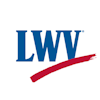Environmental and Science Advisory Board Meeting 1/9/24
by Kevin Stearns
For more information (including members in attendance) see the full notes document here.*
View the meeting agenda.
Key Points
- Danielle Reimanis presented an early draft for Larimer County's Water Master Plan.
- The board discussed their role in the 1041 application process.
- The board discussed the application process for the Environmental Stewardship Award.
Commissioners Raise Many Questions About The Water Master Plan
Danielle Reimanis prepared a presentation on Larimer County's Water Master Plan that gives an overview on its goals and challenges. The presentation includes requests for questions and comments from the board as well as providing some up-to-date information about the water supply in the county.
The plan's goals include:
- Improving long term planning for the water supply in unincorporated areas.
- Promotion of water sharing strategies for agriculture.
- Addressing risks and sustainability of water supply.
- Preparing responsive land use policies and standards.
General information about Larimer water supplies include:
- 57% of Larimer County's water is sourced locally, with 43% being redirected from the Colorado River.
- Irrigated lands have decreased 47%.
- Centralized water systems that include over 100 different water providers serve 385,600 people. The county is not itself a water provider.
- At buildout, growth in water demand is projected to be 25-90%..
- Four public outreach events are planned.
The Water Master Plan will also calculate various risks which will be plotted on a map of the county divided by watershed. These risks include reduced water supply, increased water demand, watershed and natural hazards, water rights, infrastructure risks and limitations, lack of water conservation policies, and lack of water education. The board also noted that precipitation models have a very high level of uncertainty now.Danielle agreed.
The board learned more facts in the question and discussion section of the presentation. For instance, the county will not be doing a gap analysis; it will be done by municipal utility. Roughly half of the county is state and federal land. Since most water heads are located on public land, the county will have to coordinate with various groups. They already have a representative at CSU to help. The spatial analysis will not cover watersheds upstream of, or outside Larimer County.
Danielle promised to get answers to some additional questions from the board:
- What is the planning horizon?
- Will affordability be in the risk assessment?
- How are fire risks calculated?
- Can something be done about residential yards?
- The risks are all about water supply, but what about riparian ecosystems?
- Water degradation is focused on natural disasters, but what about ecosystem resiliency?
- The Colorado Water Conservation board is reporting up to a 20% decline in water flow. Is the decline of availability taken into account?
- Are human-made threats such as vehicles or household products going to be accounted for?
The board unanimously passed a motion to record and memorialize their comments and questions to ensure that none of them would be overlooked.
The Board Receives Their Updates From Commissioner Kefalas
- - John Kefalas was appointed Chair of County Commissioners for 2024.
- - Property Tax Bills will go out by the end of January.
- - County Commissioners will have their yearly retreat on Jan.30.
- - The deadline for the 1041 pipeline application from Thornton is in about 60 days.
- - The 1041 application will be reviewed by the planning commision on Feb.14.
- - The first Climate Smart and Future Ready planning session of 2024 was on Jan. 8.
- - A member of Senator Neguse's office was hired to develop the legislative agenda for Larimer County interests at the capitol.
The Environmental and Science Advisory Board will not Engage in the 1041 Application Process
The board had requested that the county decide its advisory role in the 1041 application process. They were informed that it is "not practical or appropriate for boards to have a formal role in the process". Individual members, however, can engage in the process as a member of the community.
Kefalas clarified that the board's role will include providing advice and guidance on legislation and policy, and that the board may decide to weigh in on bills outside of the 1041 process.
Further Questions
What is the influence of individual community engagement on processes like the 1041 application process compared to the influence of an advisory board?
Given the high unpredictability in precipitation models, water flow predictions, and projected growth in water demand, how adaptable is the Water Master Plan going forward?
Next Meeting
Febuary 13, 2024
*Citizen Observers further the commitment of the League of Women Voters to its principle of Citizens Right to Know, however, we are not acting as journalists. Omissions and errors are possible. It is assumed that users of this information are responsible for their own fact-checking. This could include contacting a government clerk, conversing with an elected official or staff, and/or asking us to speak to the Observer who attended.
